Checklist for new development
Some of Carmarthenshire’s urban spaces have areas of very poor environmental quality and low levels of GBI provision.
Integrating GBI assets into new developments right from the start presents an opportunity to put GBI back into the heart of Carmarthenshire’s towns.
The Welsh government’s Building Better Places paper (2020) explains how the planning system has a key responsibility to secure green infrastructure.
It also includes proposals to develop a national framework of green infrastructure standards – bringing together recognised guidance and best practice principles such as Building with Nature (BwN).
BwN is a voluntary approach that enables developers to go beyond the statutory requirements and create places that really deliver for people and wildlife.
The Checklist
This checklist is designed to be a starting point for early discussions between developers and the Council’s Development Management team on the design of new development.
It draws on existing standards such as Building With Nature, but also incorporates the key issues specifically identified in this Strategy of relevance to Carmarthenshire.
It takes the form of a set of simple questions. The aim of the checklist is to facilitate a co-ordinated and consistent approach to incorporating GBI in new development across Carmarthenshire, as well as retrofitting existing development.
This checklist will also inform future design coding and design guidance. This will ensure that design quality in Carmarthenshire delivers on the objectives of the GBI Strategy.
Section 1: Starting with the landscape
Image: Landscape led design in Toryglen, Scotland (Source: LUC)
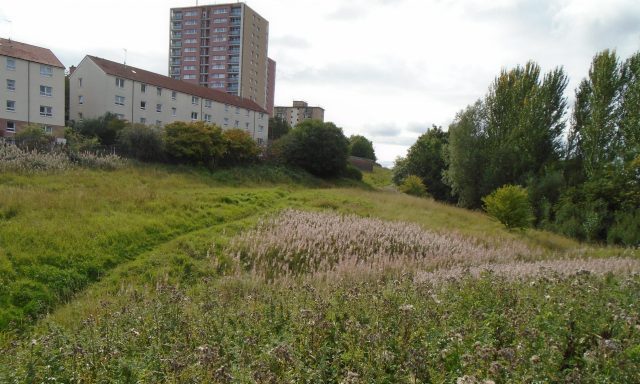
- Does the design seek to retain, protect and incorporate existing landscape and ecological features of suitable condition and quality as part of its layout? Does the development provide attractive environments with a distinctive sense of place close to areas where people live, work and visit?
- Does the development deliver multifunctional GBI design which effectively integrates benefits for People, Nature and Place?
- Have surface water management and SuDS opportunities been considered at the earliest stages of concept planning? including natural flow paths and potential discharge points?
- Does the design of the scheme connect effectively beyond the ‘red line boundary’ of the site and take account of its wider environment? How does it contribute to the wider nature recovery network?
Section 2: Tree planting
Image: Tree planting (Source: Manchester City of Trees)
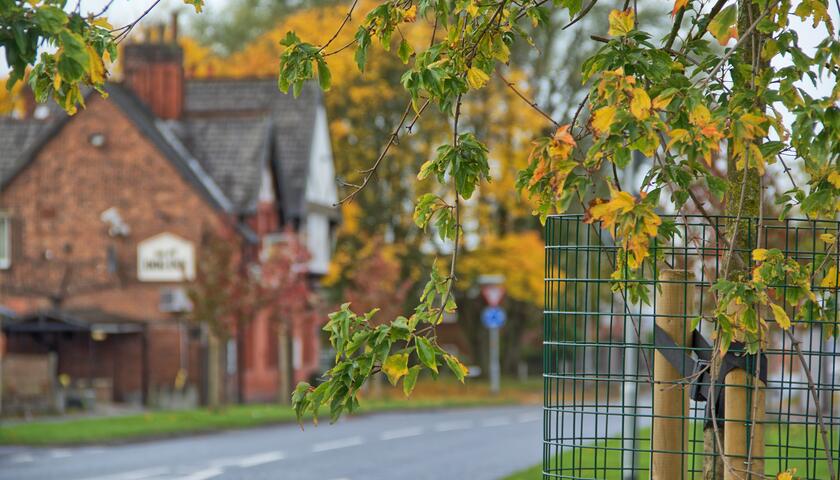
- Does the design seek to retain, protect and incorporate existing trees and hedges of suitable condition and quality as part of the development layout?
- Does the development deliver tree planting as part of quality landscape design which provides effective benefits for People, Nature and Place?
- Does the selection of trees meet the intended function, are they appropriate species and do they promote positive diversity within the local tree population?
- Does the placement of trees take into account factors such as mature crown spread, highway visibility sight-lines, location of services, and minimum off sets from intrusive elements?
- Does the placement of trees take into account factors such as below-ground infrastructure, irrigation and drainage?
Section 3: Walking and Cycling
Image: The masterplan for Elderberry Walk in Bristol incorporates a green street and won a Building with Nature Award (Source: BwN)
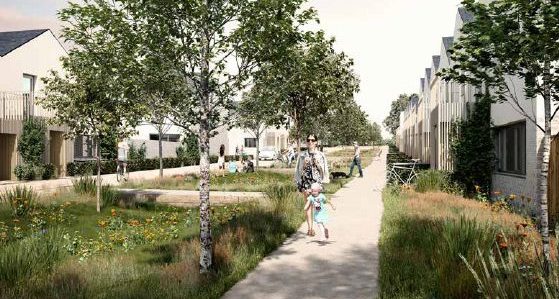
- Does the development start from a presumption that walking and cycling will be the primary mode of travel for short journeys?
- Are walking and cycling routes attractive and integrated with GBI assets of all scales?
- Does the scheme connect effectively into the wider walking and cycling networks and greenways, so that people of all ages and abilities can access important daily destinations (including schools, shops and leisure centres) without a private car?
- Can the development reduce car parking provision, supported by controlled parking zones, car free development schemes and car clubs? Is this ‘freed up’ space used for GBI delivery?
Section 4: Community Food Growing
Image: Growing space within residential courtyard (Image source: LUC)
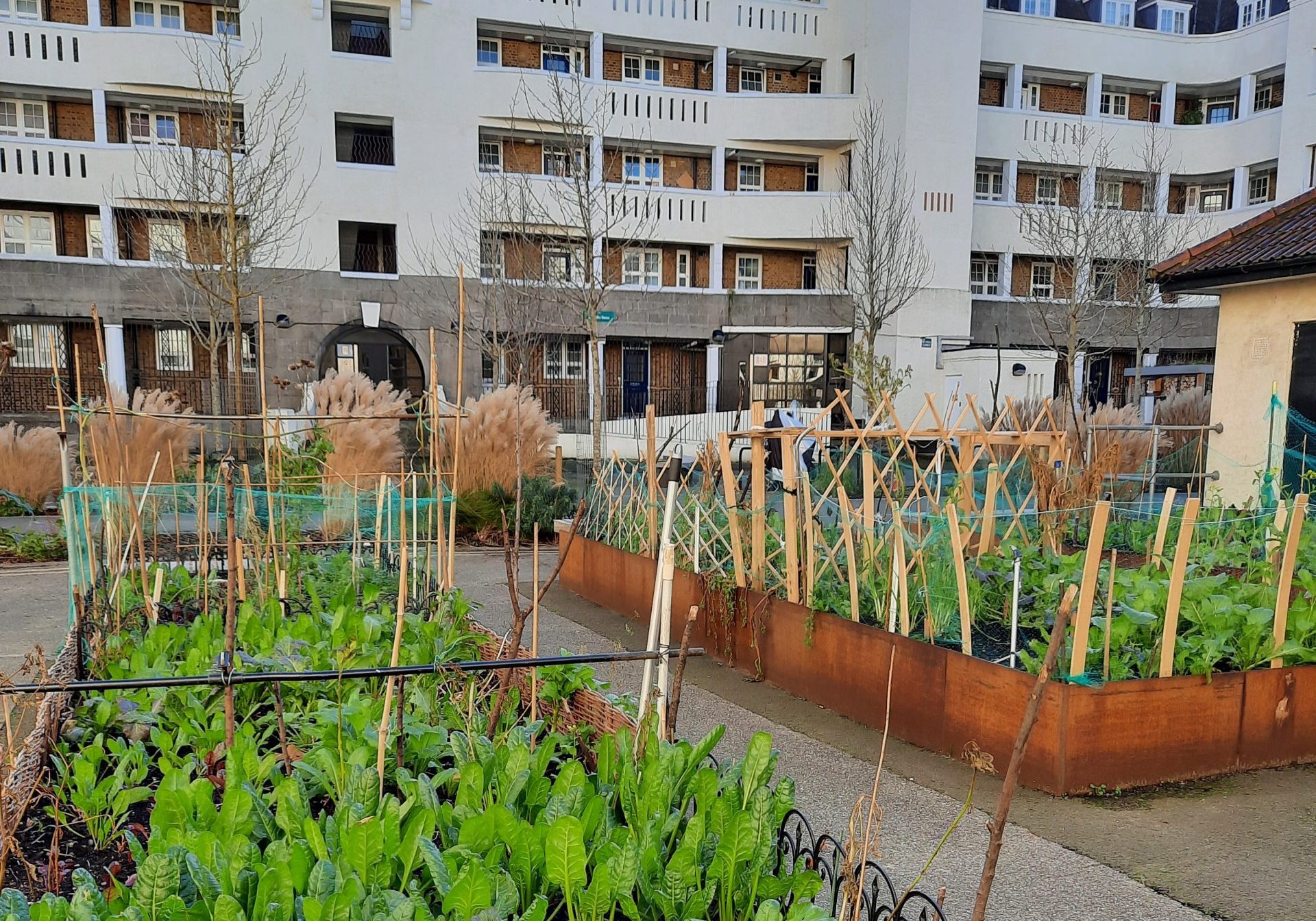
- Does the scheme ensure the provision of designated space to enable effective community growing- with appropriate environmental conditions in terms of aspect, shelter, drainage and soil provision?
- Does the scheme consider start-up funding and call-outs to facilitate a community growing group?
Section 5: Pollinator Planting
Image: Pollinator planting within residential scheme (Source: LUC)
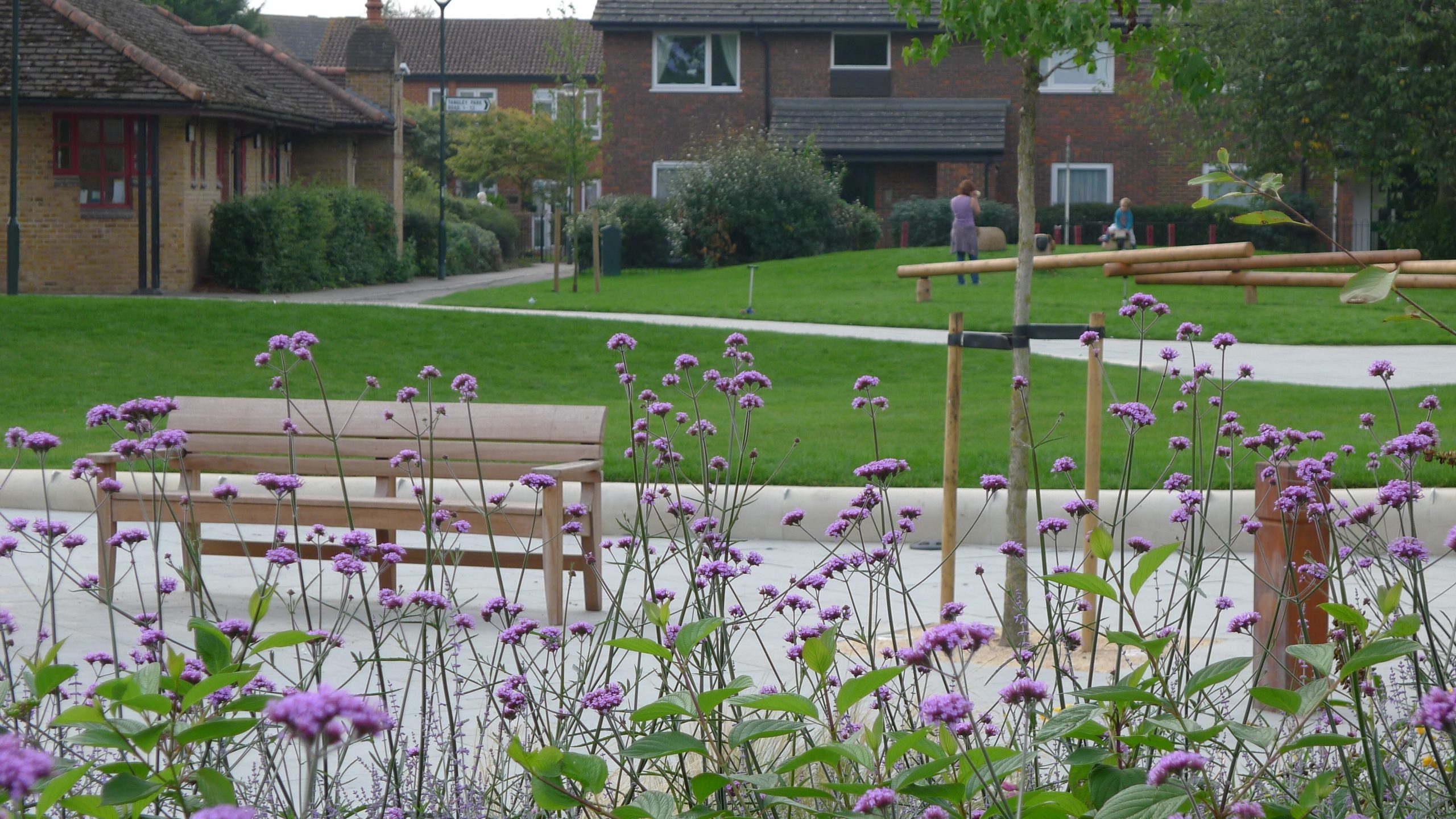
- Are areas of wildflower and ‘wilder’ areas of grass land integrated into the public realm, as opposed to closely mown grass areas? Have any opportunities been missed and why?
- What is the percentage of native species within the proposed planting mix?
Section 5: Play
Image: Natural play feature (Source: LUC)
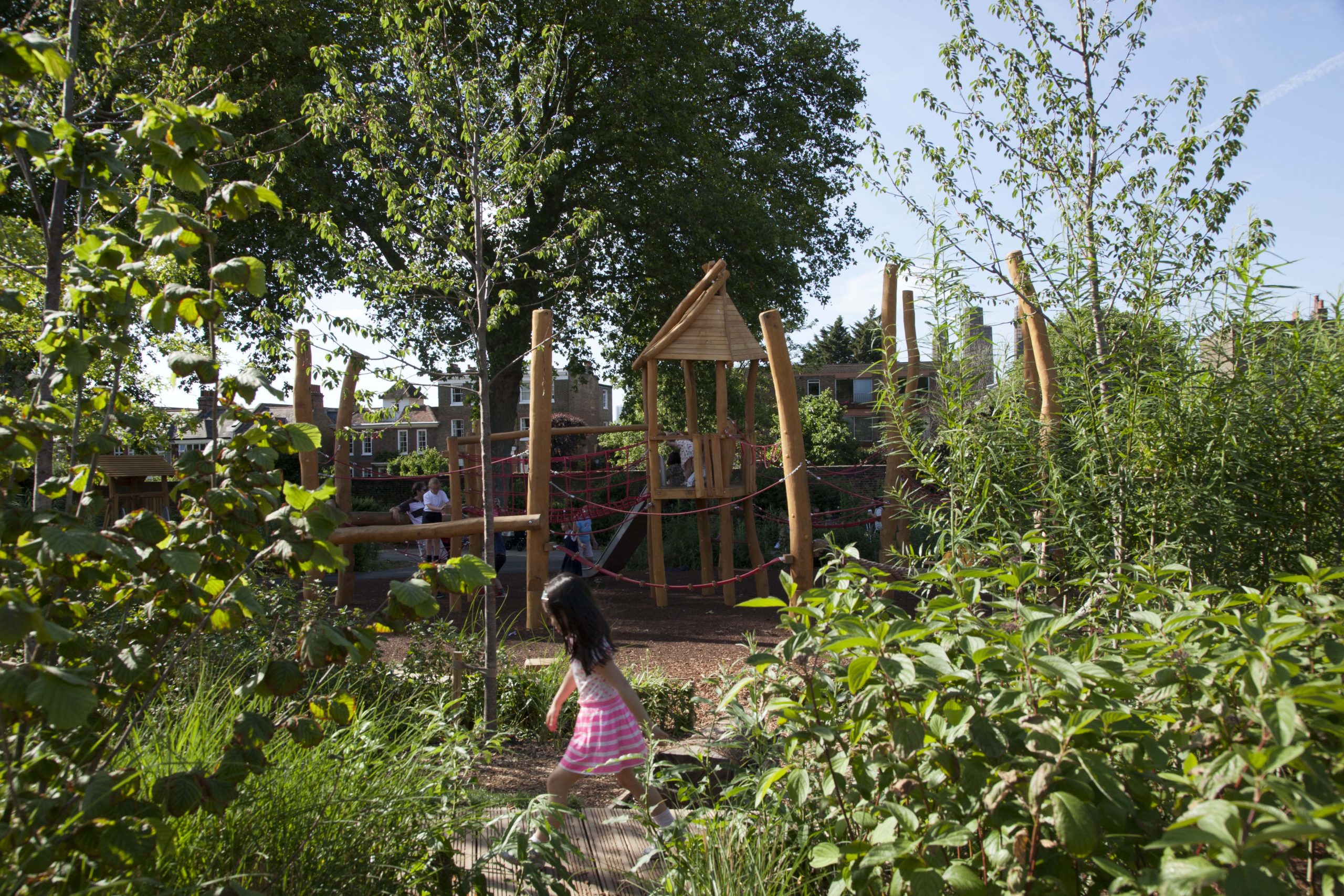
- Do the proposals address the shortfall of play facilities within the area, either by improving quantity and/or quality?
- Is the play area set within an effective and attractive environment with a distinctive sense of place – close to areas where people live, work and visit?
- Are the play areas multifunctional and nature-based – effectively delivering benefits for People, Nature and Place?
- Have incidental ‘playable’ spaces been incorporated in the scheme, including along walking and cycling routes?
- Are play spaces provided inclusive where children of all abilities can play with a rich range of physical, sensory, and social experiences? Do the play spaces need to be behind railings? Or can they be more closely integrated into the wider public realm?
Section 6: SuDS and natural flood management
Image: Example of SuDS integrated into the public realm of a housing scheme (Source: LUC)
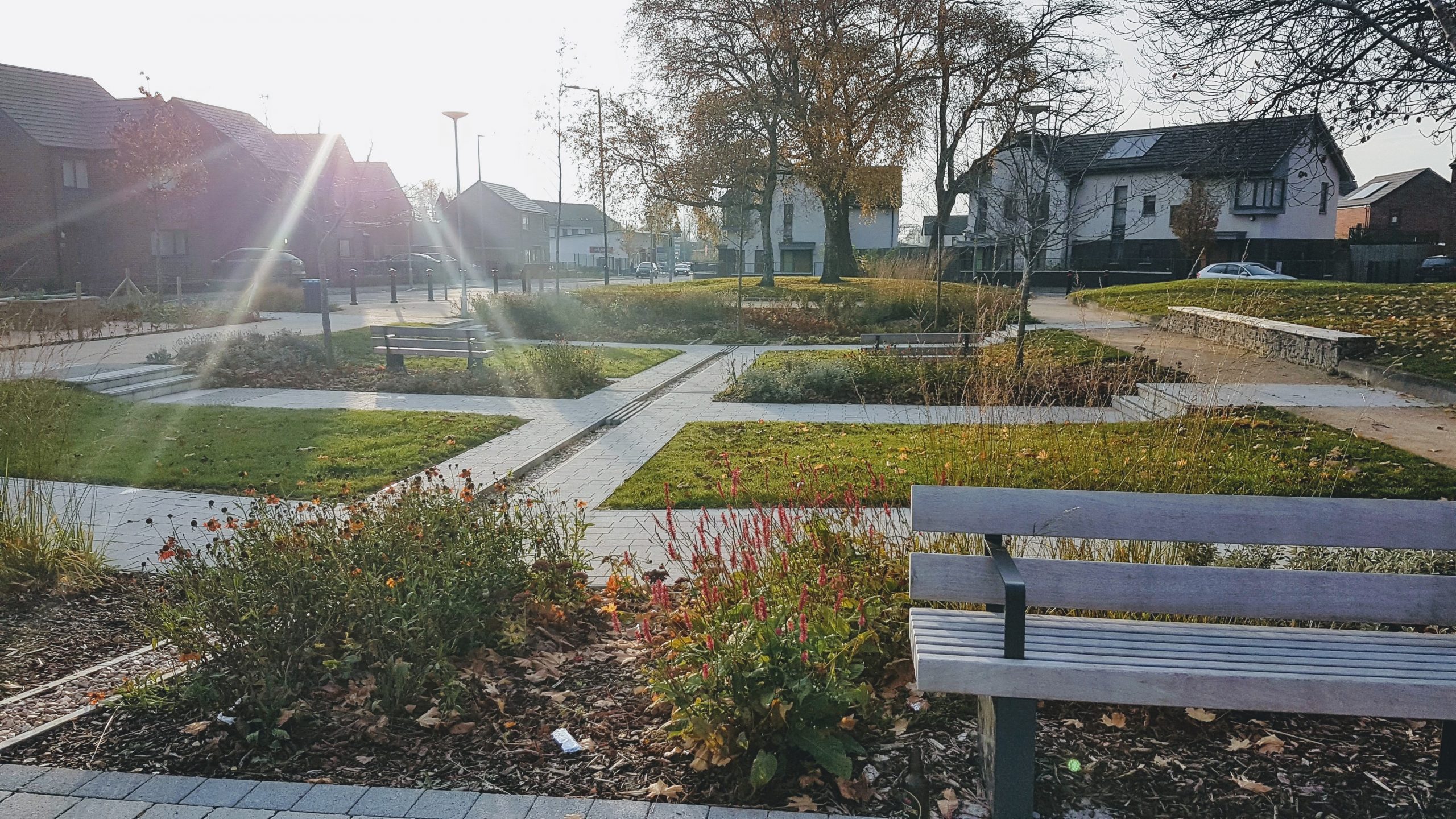
- Has there been early collaboration between the Sustainable Drainage Approval Body (SAB) and the design team?
- Does the development take forward and build on the ‘Statutory standards for sustainable drainage systems’ in order to promote a network of multifunctional SuDs features that serve the 4 pillars of water quantity, water quality, amenity and biodiversity?
- Does the development seek to improve water quality and maintain the natural water cycle within the boundary of the policy area?
- Have the best SuDS techniques been selected for the available site characteristics – including topography, ground conditions, the surface water runoff destination and the character of the setting?
- Has the local community been engaged in how SuDS should be delivered?
- Has long-term maintenance been considered from the early stages of design and priced into delivery?
Section 7: Long-term maintenance
Image: The Wildlife Trust help to maintain the green space at Trumpington Meadows in Cambridge (Image source: Wildlife Trust)
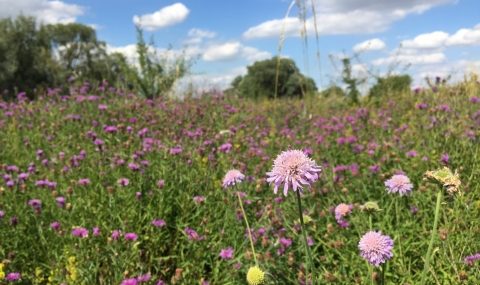
- Has long-term stewardship of GBI assets been discussed at an early stage of the design?
- Have delivery partners been clearly identified?
- Have alternative models been explored, such as partnerships with the Land Trust, the Wildlife Trust, community land trusts (CLTs) or other community-led initiatives?
